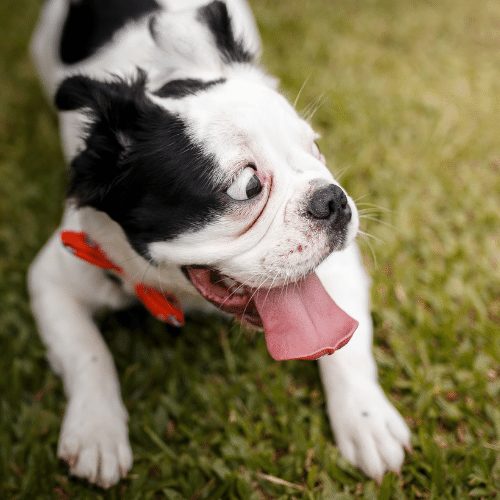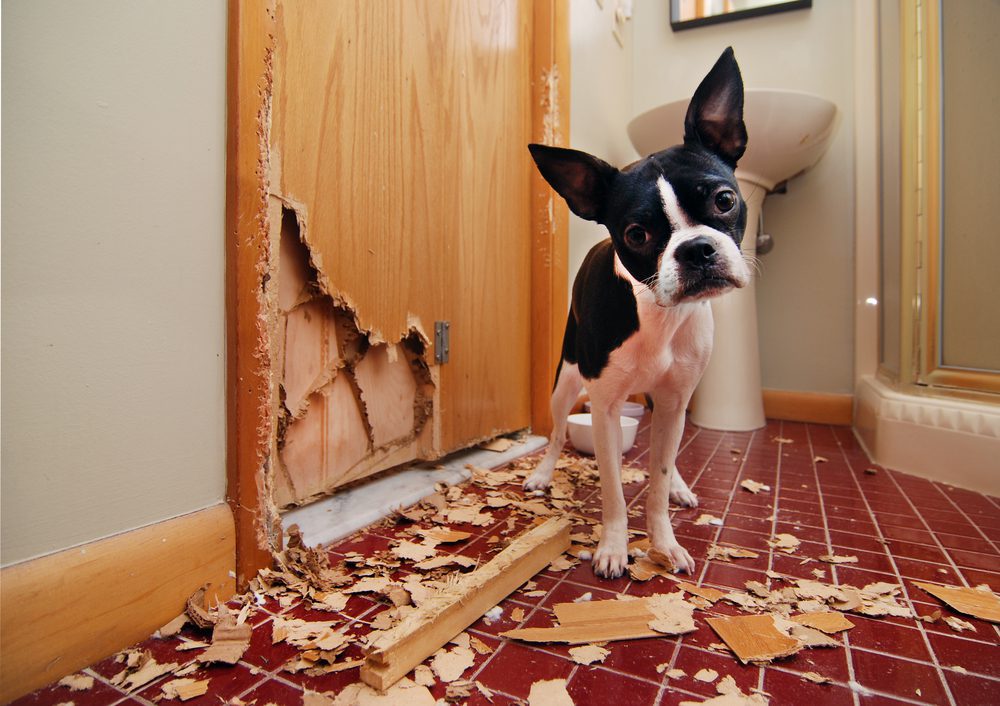#2 Have your dog go into the crate and reward him a lot.
Give him his treats and chewies. At first you can simply stand next to the crate as your dog is in there eating and gnawing.
As your dog is in the crate enjoying his treats, you can walk around the room. Put away some stuff, fold laundry, talk to family members etc. – your dog should experience that even though you are not standing right next to him, you are not disappearing!
#4 Leave the room for brief periods.
Now try to leave the room for brief periods and return right away. Your dog can look up from his chews as you leave but he should not be in a panic. At first you might only leave for 5-10 seconds, walk up and down the hallway and return. It is really important that your dog does not panic! You want him to experience that even if you leave, you will return.
Can crate training help with separation anxiety?
In order to answer this question, we need to understand what separation anxiety is and why dogs develop it.
It is not a natural behavior for dogs to stay by themselves for longer periods of times. As social animals, they are best adapted to be in groups. Dogs that live in a household with other dogs usually have a much lower chance of developing separation anxiety from their owner as they are never “truly alone”.
Ideally you should introduce staying alone at home in many small steps. If you have a puppy, leave him for short intervals, every day. Instead of only having occasional and long separations, make them short and frequent.
If this is not trained well during a dog’s first year of life, chances are that the dog can develop separation anxiety.
Separation anxiety is also very common in rescue dogs. They have strong trauma linked to being left alone so of course they do not want their owners to leave.

A dog with separation anxiety will essentially have a “doggy panic attack” whenever the owner leaves the house. The dog may whine, pace incessantly, drool, bark etc. Some dogs injure themselves in an attempt to break out of the house.
This actually happens a lot of dogs that are crated while the owner leaves – a sign that a crate alone is not going to change your dog’s behavior. These dogs try to chew on the crate and scratch obsessively. Quite often the owner comes home to a dog whose paws are bloody and whose lips are torn from the crate or the crate water bowl.
If the dog is not crated, he often paces around tirelessly and is unable to settle. This is where a crate – if used appropriately – can help:
SEPARATION ANXIETY: WHAT ACTUALLY HELPED MY DOG
Our dogs are social animals that love nothing more than being by our side. However, the strong bond they share with us can lead many to become anxious and stressed when they’re alone. This can reveal itself in destructive behaviors such as barking, whining, and chewing.
Dogs with separation anxiety can be extremely difficult to crate train – the crate should feel like a safe and secure space, but being kept away from us can make them feel the opposite.
That’s why today, we’ll cover some practical tips for crate training a dog with separation anxiety.
According to the American Kennel Club (AKC), “separation anxiety is when your dog exhibits extreme stress from the time you leave him alone until you return.”
Separation anxiety can be the result of several things, from genetics and trauma to a lack of proper socialization. Some breeds are more prone to separation anxiety than others, such as cavalier spaniels, border collies, and Labrador retrievers. 